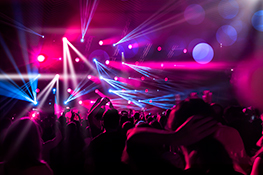Stage Lighting Made Easy: A Beginner’s Guide to Stunning Stage Effects
Understanding the Basics of Stage Lighting
So you’re ready to take your stage productions to the next level? Mastering stage lighting is key to transforming a simple performance into a captivating visual experience. This beginner’s guide will demystify the art of lighting design, providing you with the knowledge and tools to create stunning stage effects, regardless of your budget or experience.
First, let’s clarify the core components. Stage lighting isn’t just about illuminating the actors; it’s about shaping the mood, highlighting key moments, and guiding the audience’s eye. Understanding the interplay of light, color, and shadow is crucial. We’ll explore different lighting instruments, their functions, and how to effectively use them to achieve specific effects.
Essential Lighting Instruments: A Quick Overview
Several types of lighting instruments form the backbone of any stage lighting setup. Knowing their capabilities is the first step towards effective design:
- Fresnel: Known for their soft, even light, Fresnels are versatile and ideal for wash lighting and highlighting.
- PAR Cans: Producing a powerful, focused beam, PAR cans are perfect for backlighting or creating intense spotlights.
- Ellipsoidal Reflector Spotlight (ERS): Offering precise control over beam shape and size, ERS lights are essential for sharp gobos (projected images) and precise highlighting.
- LED Lights: Energy-efficient and offering a wide range of colors, LED lights are rapidly becoming the industry standard for their versatility and cost-effectiveness.
Each instrument offers unique characteristics. Experimenting with different fixtures will help you understand their strengths and weaknesses, allowing you to choose the right tool for each job.
Color and Gel Filters: Mastering the Palette
Color plays a significant role in setting the tone and mood of your performance. Gel filters, placed in front of lighting instruments, transform the color of the light. Experimenting with different gel colors allows you to create specific atmospheres:
- Warm colors (reds, oranges, yellows): evoke feelings of comfort, excitement, and passion.
- Cool colors (blues, greens, purples): often create a sense of calmness, mystery, or sadness.
Remember, color temperature (measured in Kelvin) also influences the feel. Cooler temperatures (higher Kelvin) appear bluer, while warmer temperatures (lower Kelvin) appear more yellowish or orange. Understanding this interplay will help you achieve a cohesive and impactful visual design.
Lighting Techniques for Beginners: From Simple to Stunning
Let’s move on to practical techniques. Even with basic equipment, you can achieve impressive results:
- Three-Point Lighting: This fundamental technique uses a key light (main source), a fill light (softening shadows), and a backlight (separating the subject from the background). It’s a great starting point for any stage production.
- Silhouetting: Backlighting subjects without illuminating their faces creates dramatic silhouettes, perfect for building suspense or mystery.
- Color Mixing: Overlapping different colored lights creates unique shades and hues, adding depth and complexity to your lighting design.
Safety First: Essential Precautions for Stage Lighting
Working with stage lighting involves safety considerations. Always follow these guidelines:
- Never touch hot light bulbs or fixtures. Allow ample time for cooling down before handling equipment.
- Use appropriate safety cables and connectors. Avoid overloading circuits and ensure proper grounding.
- Never leave unattended equipment switched on. Turn off lights when not in use to prevent accidents and overheating.
Conclusion: Embark on Your Lighting Journey
Mastering stage lighting is a journey of experimentation and learning. Start with the basics, practice different techniques, and don’t be afraid to try new approaches. By understanding the fundamentals and applying these principles, you can transform your stage productions from ordinary to extraordinary, creating memorable visual experiences for your audience. Now, go illuminate your stage!


 Auditorium Construction Services
Auditorium Construction Services 